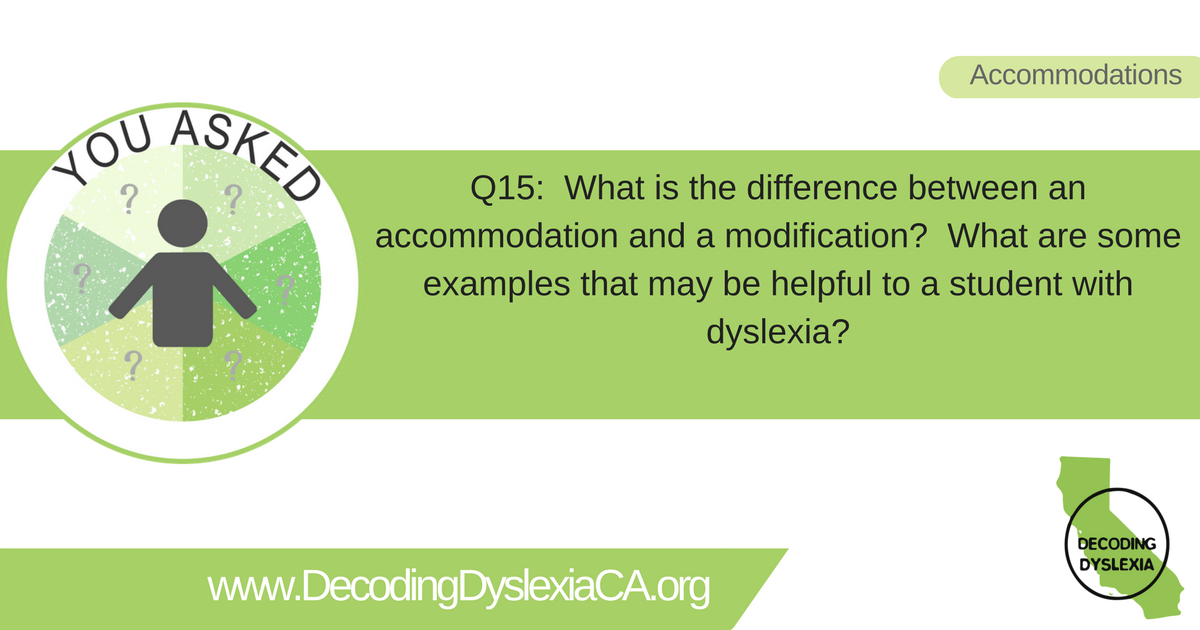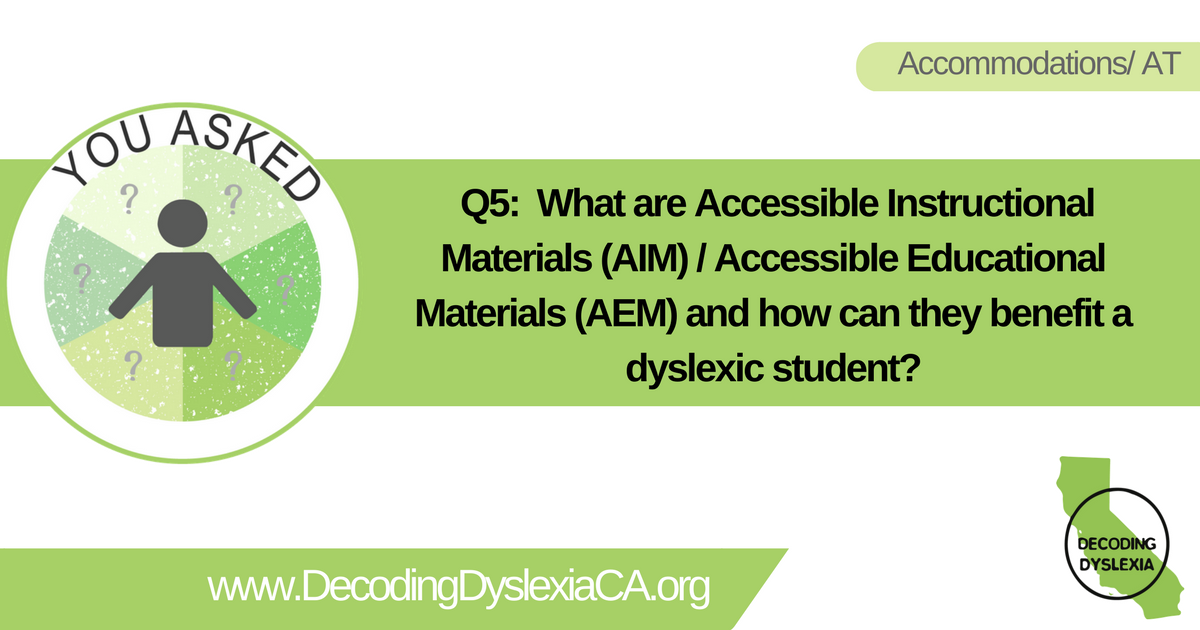Download a PDF version of this You Asked question and answer here.
Q: What is the difference between an accommodation and a modification? What are some examples that may be helpful to a student with dyslexia?
A: Accommodations ensure equal access to a student with a learning disability. They serve to “level the playing field” between students with learning disabilities and their peers. Accommodations do not change the skills being taught or tested. An example of an accommodation would be “testing done in a quiet, separate environment”.
Providing accommodations allows students with dyslexia access to grade level curriculum and also provides the opportunity for a dyslexic student to demonstrate their knowledge and skills by assessing their abilities not their disabilities.
Modifications changes the nature of the task or target skills being taught or tested. An example would be “providing a calculator on a test of math facts”.
A detailed article about accommodations/modifications including some examples can be found HERE.
Accommodations/Modifications can be provided in the classroom, for assessment purposes, and outside the classroom for homework assignments. They should be agreed upon by the IEP or Section 504 team and should be well-documented. Accommodations/Modifications should be reviewed at least annually as student needs and classroom environment change. It may be helpful to discuss agreed-upon accommodations/modifications with each teacher to ensure consistent application.
In drafting accommodations/modifications, it is important to be as specific as possible. For example, if “extra time on assignments” is listed, what does this mean? Should student be provided 150% more time than other students or does student get an extra day to turn in homework? Watch out for subjective language such as “reduced assignments, as needed”. Who determines what is needed? That determination can vary widely between teachers. Spend the time needed with IEP or Section 504 team to make sure accommodations are clear and well-defined so that any teacher could read them and know what was intended.
Assistive technology (A.T.) can be an effective way to provide needed accommodations. A sample letter from the Disability Rights Education and Defense Fund requesting an A.T. Assessment can be found HERE.
For students without an IEP or Section 504, the school may be willing to provide informal accommodations. Parents can request a Student Study Team (or SST) meeting to discuss possible informal accommodations. Note: Schools are not legally required to provide informal accommodations. Examples of informal accommodations can be found HERE.
For more YOU ASKED questions and answers click HERE


